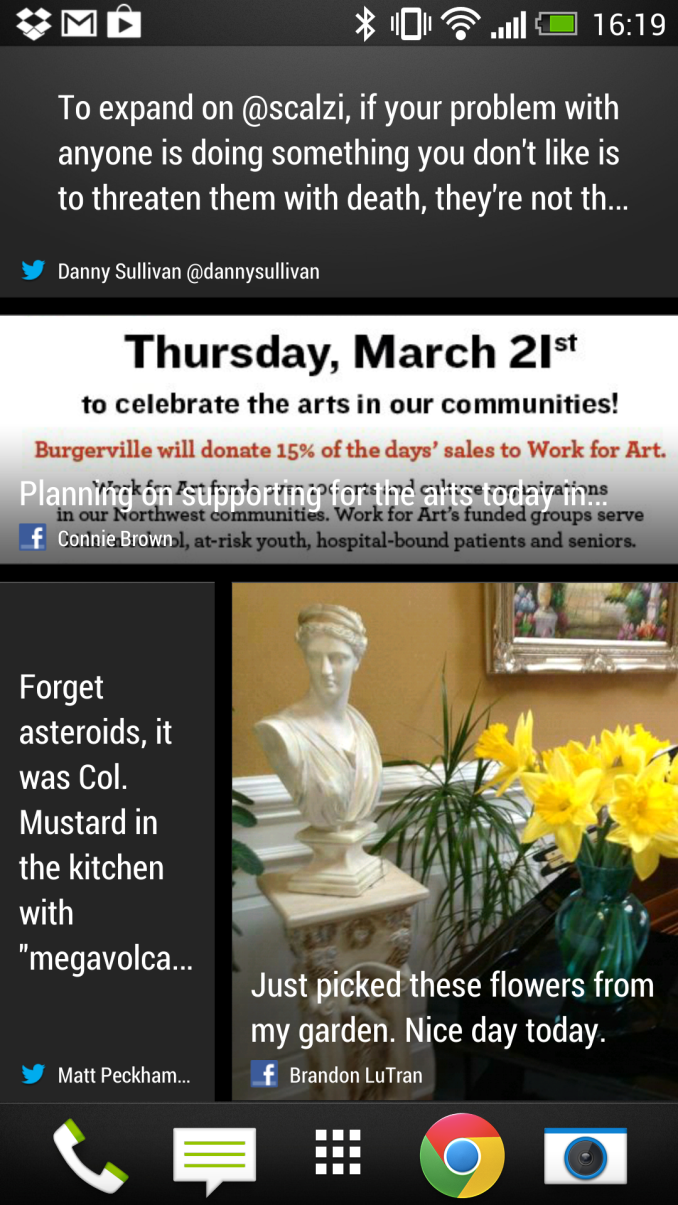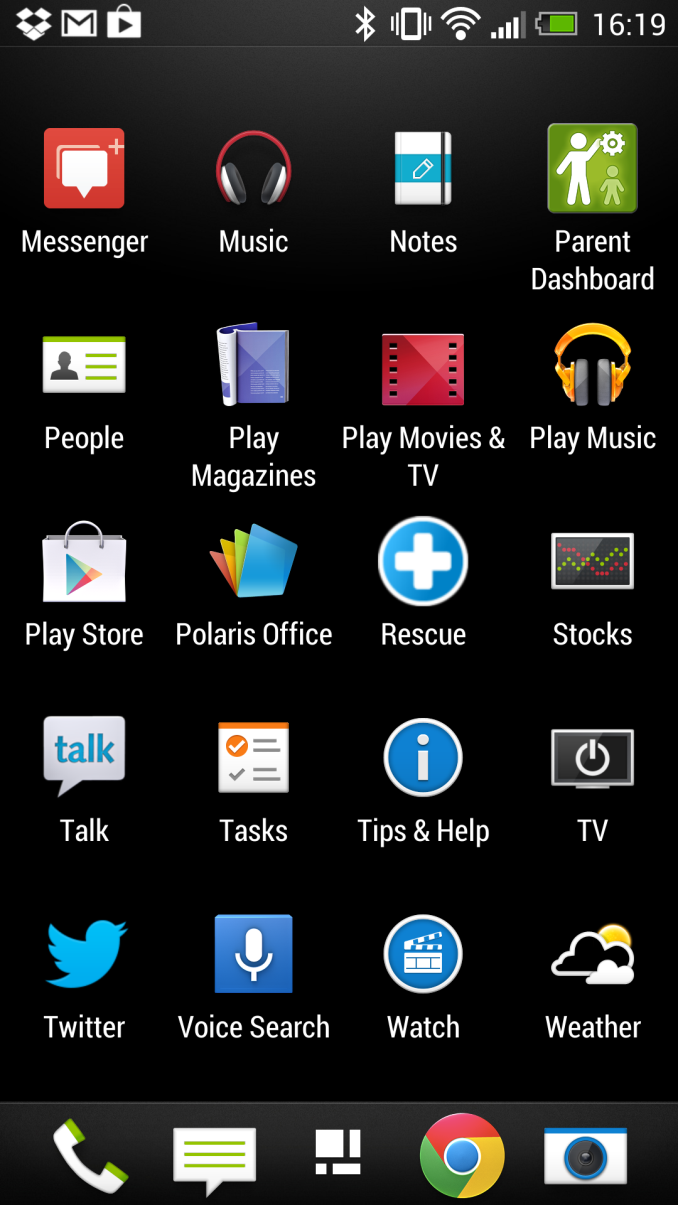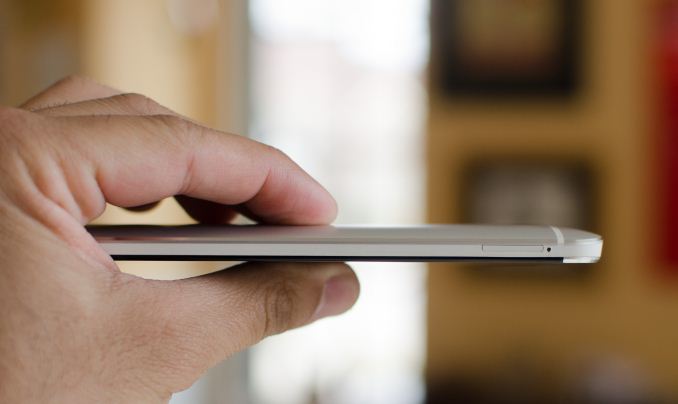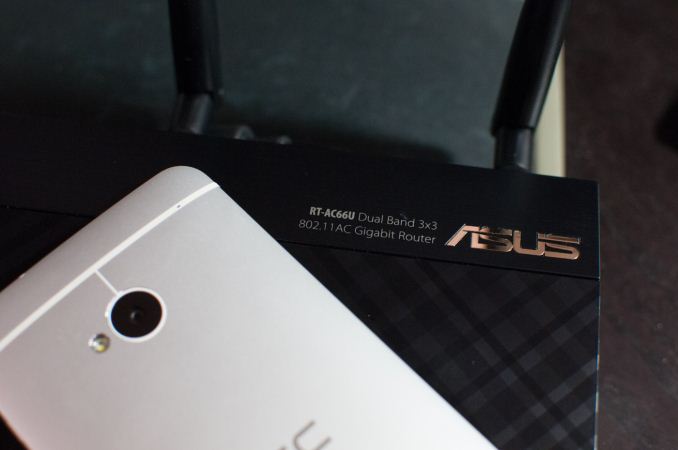The HTC One: A Remarkable Device, Anand’s mini Review
by Anand Lal Shimpi on March 21, 2013 4:49 PM EST- Posted in
- Smartphones
- HTC
- Mobile
- HTC One
Android/Sense
The One ships with Sense 5.0, and I have to say that the latest version of Sense is really the first custom Android skin that I don’t mind. I’m not sold on Blinkfeed, the default homescreen that allows you to aggregate content from multiple web sources as well as Twitter and Facebook, but thankfully you can easily change that default to something more traditionally Android.
With Sense 5.0 HTC dramatically reduced the presence of widgets on the default home screen. Other than the Blinkfeed screen, there’s only a single home screen by default and the only widget on that screen is a Google search box. You can obviously add all of the widgets you want, but this is a noticeable departure from HTC’s strategy in the past. To be honest, it’s a lot cleaner.
Sense 5.0 isn’t intrusive, and the work HTC has done in the gallery app sort of make the customizations worth it (more on this later). Even the default pre-load of apps is very sensible.
Thanks to the underlying use of Android 4.1.2 combined with the fast Snapdragon 600 SoC, UI frame rate is incredibly smooth. Some interactions are still not perfect (e.g. zooming in Google Maps) but the overall experience is very polished and very fast.
Performance & Battery Life
The One is the first Snapdragon 600 based smartphone that I’ve used regularly. For those who aren’t familiar with Qualcomm’s latest branding change, Snapdragon 600 refers to a quad-core Krait 300 based SoC with Adreno 320 graphics (APQ8064T). The SoC still uses the same 28nm LP process as the previous quad-core flagship (APQ8064), but clocks are a bit higher (1.7GHz in the One, 1.9GHz in the Galaxy S 4).
GPU clocks appear unchanged, which is contrary to what I was told at the launch of Krait 300 but it’s entirely possible that we’ll see implementation with higher GPU clocks.
Performance, as I mentioned before, is very good. Even the speed of the NAND HTC used in the device is among the best I’ve seen in Android devices. We’re still not yet at the point where I believe smartphone SoC performance is good enough, but at least we won’t see a huge jump in SoC performance (at similar power) until the move to 20nm in mid to late 2014.
The impact of all of this on battery life, as always, depends on your usage model. I’ve been using the international One on AT&T, and 3G battery life is comparable to the iPhone 5 on the same network (non-LTE) at identical brightness levels. I have yet to see what the difference will be like with LTE enabled.
Obviously with four cores and a larger, higher resolution display, the One definitely has the ability to draw more power than the iPhone 5. Keep the cores more active and/or drive the display at very high brightness levels and you’ll see worse battery life. For the past couple of years I’ve been talking about the increase in dynamic range when it comes to smartphone battery life, the One is no different in this regard. Brian will have a full rundown of battery life data on the One in his review.
Other Frills: Of Big Screens and Usability
For me, the iPhone 5’s display is a little too small, and the One is probably a little too big. I think I agree with Brian here in that the ideal display size is somewhere around 4.3”. That being said, I find both devices (the 5 and the One) to be comfortably usable. The 5 is better for one handed use, while the One is better for actually consuming web content. In pocket, the One is thin enough to not be a problem.
Although it’s probably a bit overkill, I am pleased with the move to 1080p across all of the high end Android smartphones. The One’s display looks excellent and lacks the oversaturated colors of the alternative AMOLED displays.
The One also features stereo speakers that get impressively loud (louder than any other smartphone I’ve used, by a considerable margin). I keep my phone on silent all the time but when showing others highlights reels, the One’s loud stereo speakers definitely come in handy.
The final element of the One that I’m really happy about is the integration of 802.11ac support. The One is good for WiFi speeds of up to 275Mbps (that’s actually tested, not theoretical).














434 Comments
View All Comments
DEECEE - Friday, March 29, 2013 - link
Really, Razr Maxx lasts longer and still has replaceable battery...phillyry - Sunday, March 24, 2013 - link
Or when they fell out when you dropped the phone!CeriseCogburn - Monday, March 25, 2013 - link
The back cover coming off and the battery spewing across the floor, (the sim card(s) * or SD lesser so) ABSORB THE SHOCK of the floor strike and spread the force across a largeer area of the phone, SAVING IT FROM DAMAGE, DUMMY.So while you're all about your brick shattering or taking a huge whomp on it's now bent forever scratched metal edge and cracked screen, other love the convenience and the SHOCK ABSORBER function.
Thank you, this has been a we love Mr Wizard lesson.
DEECEE - Friday, March 29, 2013 - link
For SD cards, maybe, you can pay to get the 64GB model and think you will never have to worry about it, but Bill Gates also famously stated you will never need more than 640KB of RAM back in the DOS dates. But batteries, really, the chances for a failed battery due to abuse, power surge, or poor quality control is high, even for Apple, why leave it to chance. The issue is not having to carry a spare, the issue is how much hassle and cost it is to replace a failed battery.The same in general applies to a SD card, you may never use it, but why live in fear of running out of storage?
nerd1 - Thursday, March 21, 2013 - link
Sealed battery, non-expandable battery, 4MP camera will be deal breakers for many.The 'Ultrapixel' is just marketing gimmick for low resolution sensor. Yes, it will be better than SMALL low-MP sensors but I doubt they are any better than high-MP sensor with same size. 36MP D800 is almost as good as any low-MP DSLRs with the same sensor size.
extide - Thursday, March 21, 2013 - link
ALl cell phones use the same sensor size, and Anand said right in this review it has better low light performance than any other cell phone camera he has used. Pretty much refutes both your points right there.nerd1 - Thursday, March 21, 2013 - link
The total area of sensor remains unchanged whether you divide them by 4M or 8M. Low MP sensor surely look better in its native resolution, but it won't differ much from the DOWNSAMPLED image from high-MP sensor.metafor - Thursday, March 21, 2013 - link
Like all things, that depends on where in the "pixel size" spectrum you are. At the sizes of the D800 vs 5dM3, for instance, the ability of a single pixel of the D800 to capture light is actually bound by the optics at that point, because the pixels are already big enough.Contrast this with a 1.1um pixel and the picture changes entirely (heh). 1.1um is barely 1.5 wavelength of red light. Attenuation becomes pretty bad at that point and the optics of a wide lens itself becomes a problem due to how deep the pixel is compared to its width.
Think of it this way: 1.1um is abysmal when it comes to light attenuation. As you get to larger and larger pixels, you start getting diminishing returns on how much better light attenuates. At the D800 level, making the pixels larger won't really help that much.
s44 - Friday, March 22, 2013 - link
Read Brian's article. All sensors are *not* the same size.vulcz - Thursday, March 21, 2013 - link
You think Ultrapixel is a gimmick? Wait till you see Samsung's array of S-Stuff.